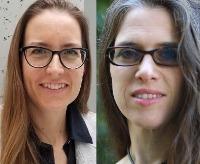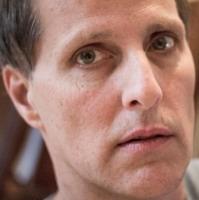DPC
A Parliament of Owls: Leveraging internal wisdom to build support for digital records
Jeanne Kramer-Smyth is Archivist and April Miller is Program Lead for Archives at World Bank Group Archives

World Bank Group Archives Digital Vault logo.
We considered writing a blog post about the technical solutions selected for the World Bank Group (WBG) Archives’ “Digital Vault” digital preservation project. We spent months working through an RFI and RFP, selecting a vendor, and finalizing contract negotiations. This was followed by work on technical design and internal approvals.
This is not what this blog post is about. Instead, this post is about identifying and tackling the people and process investments required to evolve into an archives that handles both analog and born-digital records.
Typology of Digital Collection as a Framework for Digital Preservation
Helen Hockx-Yu is Program Manager for Digital Asset Strategy and Don Brower is the Digital Library Infrastructure Lead at the University of Notre Dame in the USA
Like many academic and research libraries, the University of Notre Dame's Hesburgh Library collection has evolved over the last twenty years or so from analogue to increasingly digital, and from a physically owned and locally stored collection to a broad range of both local and external resources, organised around users’ needs.
The complexity and varied nature of our collection means this is no one- size-fits-all digital preservation approach. Different strategy is required dependent of the significant properties of the collection items.
To gain a better understanding of the Library’s overall digital content, and to help plan for digital preservation, we recently co-led a project at Hesburgh Libraries, University of Notre Dame, where we developed a Typology of Digital Collection as a framework to guide digital preservation.
The Archivist’s Guide to KryoFlux
Dorothy Waugh is Digital Archivist at Emory University in the USA
On this World Digital Preservation Day, we’re here to remind you of the humble floppy disk, last century’s save icon. Though limited in terms of capacity, these inexpensive and lightweight disks were the dominant storage device for three decades, as is evidenced by the boxes of floppy disks now found among the stacks of most archives. Among the disks at Emory University are files created by novelist and Pulitzer Prize winner Alice Walker, poet and former US Poet Laureate Natasha Trethewey, poet and writer Lucille Clifton, and the Southern Christian Leadership Conference (an Atlanta-based organization founded in the wake of the 1957 Montgomery Bus Boycott under the leadership of Dr. Martin Luther King). Unfortunately, the deterioration of such magnetic media due to age and poor storage conditions has been difficult to avoid and, with even the youngest of these disks now approaching twenty years old, recovery of data frequently proves challenging.
On Robustness
Christopher (Cal) Lee works at the School of Information and Library Science at the University of North Carolina at Chapel Hill
Digital preservation is about conveying meaningful information between contexts over time [1]. A great deal of the complexity stems from digital information residing at multiple levels of representation [2] This process is never free. It requires resources (human, technical, financial). Ensuring a steady flow of resources over time is difficult.
At any given time, dedicated individuals and informal groups play a vital role in the provision of resources (collecting, organizing, storing and sharing information in which they have an interest). Commercial providers of information systems also play a major role, by providing the platforms upon which consumers create, manage and share information.
Preserving Research Data
Brian Lavoie is Senior Research Scientist for OCLC Research
The scholarly record is evolving to incorporate a broader range of research outputs, moving beyond traditional publications like journal articles and monographs. Research data is a salient and well-documented example of this shift, and many universities are now investing considerable resources in developing RDM services for their campus, as we document in our recent Realities of Research Data Management report series. These services sit alongside much of the research life cycle, from support in developing data management plans prior to commencing research (think of DMPOnline or DMPTool), to computing and storage resources for storing, working with, and sharing data during the research process (often called active data management; for example, the DataStore service at the University of Edinburgh), to data repository services for storage, discovery, and access to final data sets (like the University of Illinois Data Bank).
Contrastes en Preservación Digital: Lo que hemos aprendido de sistemas de Preservación Digital Distribuida y Metodologías Tradicionales / Contrasts in Digital Preservation: What we have learned from Distributed Digital Preservation Systems and Traditional
Pamela Vízner es Consultora de AVP / Pamela Vízner is a Consultant for AVP
Como comunidad enfrentada a la responsabilidad de preservar la memoria de nuestras respectivas organizaciones, nos ha tocado una tarea difícil. Casi la de adivinos. Cuando hablamos de la preservación y de proteger y poner a disposición “para siempre” nuestra historia - en el medio que sea se haya originado, papel, objetos, audiovisual, etc. - dichas palabras nos quedan grandes. Hay mucha incertidumbre en ese “para siempre”. Sin embargo, hemos sido capaces de encontrar juntos poco a poco la respuesta a nuestras necesidades, y seguimos construyendo en esa dirección. Las comunidades son de suma importancia en nuestro quehacer, y cómo hemos dado forma a nuestra disciplina a pesar de esa incertidumbre. ¿Será que un enfoque comunitario es la respuesta a nuestras necesidades en preservación digital?
The fire at the National Museum in Brazil – on saving objects and digital information
Millard Schisler is Adjunct Faculty Museum Studies at Johns Hopkins University and currently working as a researcher at the Digital Culture Center, CEBRAP in São Paulo, Brazil
As news of the fire broke out on Sunday, September 2nd, 2018, the desperation hit everyone working with museums, archives and preservation of cultural heritage. Those that knew the museum, quickly realized the potential for loss of the majority of the collection due to the size of the fire as viewed through the live news sources. The following day, as the ashes were still smoldering I wondered how much of the collection had been digitized. It also dawned on me that whatever had been digitized or photographed could somehow survive as a testament to what was in the collection – not ideal, because many types of research and viewing cannot be done on a digitized version of an object – but losing the object and not having any information on it at all was even worse. Slowly news started coming out on certain collections of historical documents, photographs, and early wax cylinder recordings, among others, that had been digitized in earlier projects and even though the originals no longer remained, the digitization of these objects has provided us with something to live with, as long as these digital assets can be cared for the long-term.
Transforming Archives / Opening Up Scotland’s Archives: Winning in 2016
Victoria Brown is Programmes and Development Manager and Audrey Wilson is Skills for the Future Project Manager at the Scottish Council on Archives, and in 2016 they won a Digital Preservation Award for Teaching and Communications
When announcements of the nominations for the 2018 DPC digital preservation awards appeared, it was hard to believe two years had passed since (as hopeful nominees), we entered the grand marble foyer of the Wellcome Trust HQ. The list this year is truly impressive. The scale of the digital preservation challenge can obscure the fact that there are so many amazing projects and initiatives underway. Projects that are tackling sustainability, driving skills development and addressing the trickiest of quandaries through imaginative and applied research. It is both crucial and excellent that this work is being celebrated, recognised and shared.
New Humanist Archive — A Feat of Preservation
Tom Rodenby works for Exact Editions
Every issue of the New Humanist and its predecessors dating back to 1885 is now available through the state-of-the-art digital edition developed in partnership with Exact Editions. We like to think that those historical issues have now moved into the ‘safe pile’. In their digital format, they will stride forth into the future to be read by new generations of readers and thinkers.
Against the clock: videotape digitisation and preservation now!
Stephen McConnachie is Head of Data and Digital Preservation and Charles Fairall is Clifford Shaw Head of Conservation, at the BFI
In the late 1950s magnetic videotape recording transformed the way television programmes were made, edited and broadcast. For a generation, the 2” Quadruplex format dominated the UK broadcast industry – the machinery was manufactured to military specifications and some 60 years on, it is still just possible to replay the jumbo-sized tapes. Extinction for 2” Quad came remarkably quickly, with production of the last machinery ceasing suddenly in the early 80s. A succession of smaller tape formats followed, each one providing more and more sophistication from less and less physical footprint; open reels were replaced by cassettes and analogue transitioned to digital.






































































































































